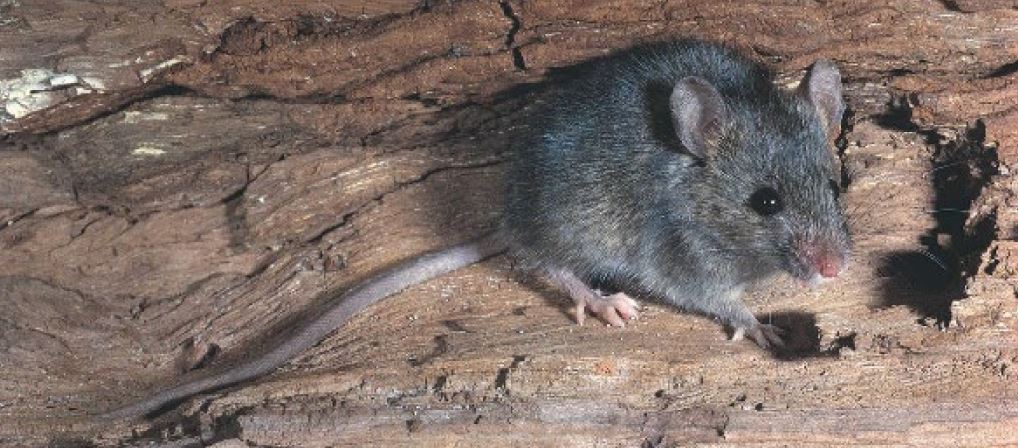Physical description
The common house mouse (Mus musculus) is the smallest pest rodent in Australia. Mice are widely distributed throughout central and coastal Australia. They are physically distinguishable from other rodents because they are smaller. Adult mice are 120–200mm in length, with a scaly tail roughly the same length as their head and body. They have sleek fur that can be yellowish brown to grey in colour on their back, and white, grey or pale-yellow colouring underneath. Mice have large ears relative to their body, and a small head with a pointed snout and bulging eyes.

Behavioural features
Mice create nests out of scavenged materials in shallow burrows or natural hollows and crevices. They are good climbers, and can easily fit through small holes and gaps, making it difficult to prevent their entry to poultry sheds. Mice are most active at night, emerging from their burrows at sunset and ranging up to 35 metres exploring for food. Visual observations of mice during the day is a clear sign of a significant local mouse population that is creating more competition for food.
Diet
Mice have an omnivorous diet consisting mainly of fruits, nuts, grains and vegetables. They eat 3–5 grams of food per day and can survive without water (they receive sufficient intake through food). Mice are neophilic, meaning that they are inquisitive of novel objects and food sources, and will readily eat bait. This contrasts with the neophobic and novel avoidance behaviour of black and Norway rats.
Lifespan and reproduction
Mice have a lifespan of 9–18 months. They are prolific breeders, with juveniles reaching sexual maturity at just two months of age. They produce 11 litters a year, each with 4–12 pups. This means that a single breeding pair can produce 130 offspring each year, each of which will begin to reproduce 8 weeks after they are born (Singleton et al., 2005). If left unchecked, mice populations can exceed 2000 animals per hectare, causing significant operational disruptions and severe financial consequences (Saunders, 1983).
Key facts for controlling mice
- It is very difficult to eliminate mice from a poultry operation, given their small size and prolific reproduction.
- For poultry operations, mice are typically little more than a nuisance, but in plagues they can cause significant damage.
- Exploit their neophilic behaviour by placing secure bait stations in areas of known activity, routinely monitoring bait intake and replenishing stations as required.
Rodenticides for mice
- Effective rodenticides for mice include the second-generation anticoagulants: brodifacoum, bromadiolone, difenacoum, difethialone or flocoumafen.
- Cholecalciferol (vitamin D3) is also an effective rodenticide that has the added benefit of a reduced secondary poisoning risk.
- Zinc phosphide is highly effective for controlling mice, but its use requires a permit and is generally recommended only during mouse plagues.
- Coumatetralyl, diphacinone and warfarin are less effective against mice because repeated feeding of bait is required for a fatal dose.
- For detailed information on these compounds, see Control options – rodenticides.

